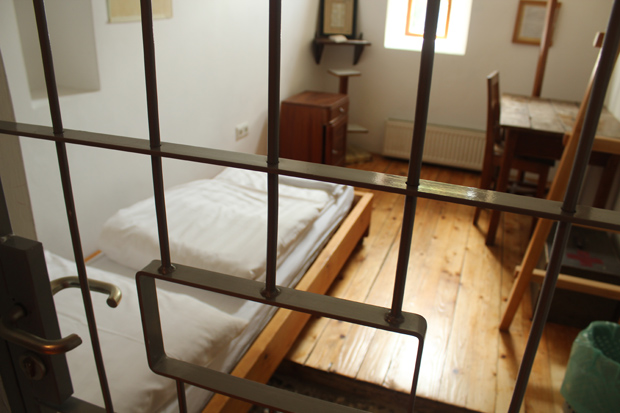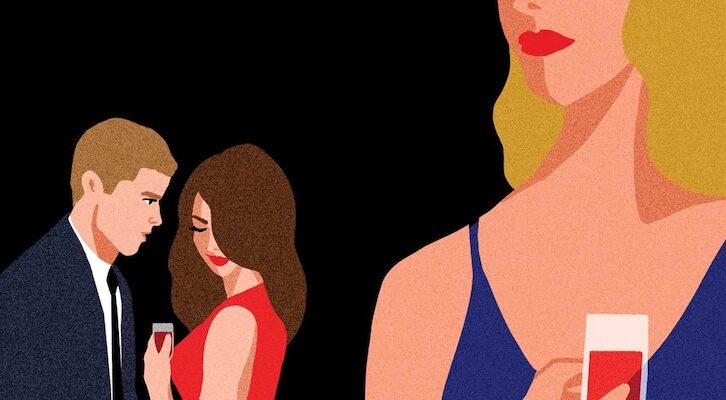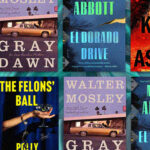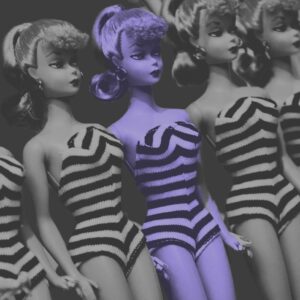You still remember the day / When you first saw the tiger’s trail. / You had just woken, and there it was. / Morning was like evening, full of shadows.
–Gregor Strnisa, “There Was a Tiger Here”
On a summer night, it’s hard to sleep in the former Slovene military prison for all the noise down below. My window faces out to the courtyard where the city’s counter-culture kids come to party, calling the night’s big bluff by outlasting it to morning. My room, or cell, as they’re called here, isn’t too expensive, so I’ve opted not to bunk up with strangers, though I may as well be roommates with the street party. And I’m sleeping with ghosts, too. For nearly a century, prisoners of a long line of military regimes were packed into this small cell, sometimes as many as ten or twelve men sleeping on their sides, alternating head to toe along the floor. They died of exposure, here, of disease, of malnutrition, of heartbreak—or were executed on the street nearby. But now it’s my hostel room, redesigned by an artist as a giant eye: the circular bed, like the room’s somber iris, is lofted in the center and accessed by a spiral ladder, the cell’s optic nerve. When I lie down and shut my own eyes against the clamor of history and the night outside, I’m like a vertical stripe across my bed’s determined stare. Paintings of eyes of many sizes rim the walls as though there were hungry animals lurking in the dark; in here, I’m laying in just one eye among a thousand.
This place is called Celica: former military prison, now a raucous, arty youth hostel in the Metelkova district—Ljubljana’s former army headquarters. Slovenia’s story is one of successive occupation. Just east of the Ljubljanitza river, the city’s flowing heart, Metelkova was once the local command center for the Hapsburgs, the Fascists, the Nazis, then the Yugoslav regime, made up of army barracks, prison blocs, and places to hitch the horses of the now bygone generals. In the Metelkova district, soldiers were trained to kill and capture, were instructed to keep the Slovene people under literal and metaphoric lock and key. For over a century, Celica, the former prison, was where people were held in solitary confinement, locked up for crimes both real and imagined, tortured, shot, slain. Passed from occupying regime to occupying regime, Metelkova was like an heirloom of totalitarian rule.
In a way, the Metelkova district still operates like a city within a city. Ljubljana’s counterculture capital, Metelkova is home to more than half a dozen underground night clubs, as well as artist galleries, studios, bright geometric collages and murals—the it-zones for the punks and hippies and alternatives and artists and the rest. And to Celica, the former prison-turned-hostel.
“We built this hostel to transform the deeds of the past into a new light,” explained Janko Rozic, an architect and one of the members of Sestava, the organization that created Celica. Its origin story looms large. In 1991, after the country declared independence from Yugoslavia, Metelkova was to be demolished in favor of new commercial developments. “To destroy a place like Metelkova was to destroy its history,” said Janko. The area quickly became a squat for young artists, free thinkers, and political radicals like Janko, as well as drug addicts and youth in search of a cause, all of whom had come of age in a time of political oppression and silencing. The squatters resented the commercialization efforts and sought to create support for their own vision for Metelkova’s transformation: building it into the artistic center of Ljubljana and creating a living memorial of the casualties of pre-Slovenia repression. The night before the old prison was to be smashed to bits, nearly two hundred bright-eyed idealists jumped the wall and occupied the old barracks.
“The next day, we stopped the bulldozers with our bodies,” recalled Janko proudly. The prison, along with the rest of Metelkova, was saved.
“We wanted to create an open space, a space that was the opposite of a prison,” Janko had told me the other day. But what is the opposite of a prison? Their answer: a hostel. A place where people from across Europe, across the world, would be free to come and go.
I met Janko while visiting Celica several years ago as a graduate student, and he had agreed to meet me there again and give me a tour. Inside Celica, Janko pointed upward to two ill-shaped windows: holes from the attempted demolition, framed and paned with glass. “See up there? We didn’t want to cover these negative bits—we wanted to open them and transform the traces of repression into a new source of light.” The chatter of city birds and Celica guests filled the adjacent courtyard, around which creeps a braid of blooming wisteria and razor wire: a remnant of the Yugoslav regime.
I finally catch some sleep, out of necessity, even as the sounds of the party below become an uproarious lullaby. In the morning, as I head to the courtyard for breakfast, shirtless young men check their email, girls sip cappuccinos, and perennial pop favorites pulse through the speakers—familiar, bright, candied sounds. Around the reception desk, cheerful posters advertise Slovene adventures to be had—seaside trips, journeys deep into Karst caves, castle tours—and the hostel’s featured weekly events, including a live music show, a beer pong tournament, and the Wednesday night shot party.
Having studied politics, human displacement, and conflict around the world, I’ve encountered many memorials—in Rwanda, Oklahoma, Italy, D.C., Cambodia, Uganda—and now I can’t get enough of them. I seek out memorials wherever I go—and sometimes travel to a place explicitly to visit its site of historical reckoning. It’s as if I’m on some sort of twisted quest to excavate memory and reconcile history, always hankering for a story of transformation and redemption. I want to understand: how do memorials help us process our grief?
This question is what brought me back to Celica. Though all memorials are as different as the histories themselves, they all share an air of quiet solemnity. But not Celica. This memorial, brimming with energy and color and life, confounds me; it’s hard to reconcile the contemporary goings-on of Celica with the history upon which it reclines. I want to believe in its project of transformation. But watching all these young travelers nursing their hangovers over breakfast, I wonder: Is it possible that Celica, so hell-bent on being a living memorial, has done more to erase history than it has to preserve it?
* * * *
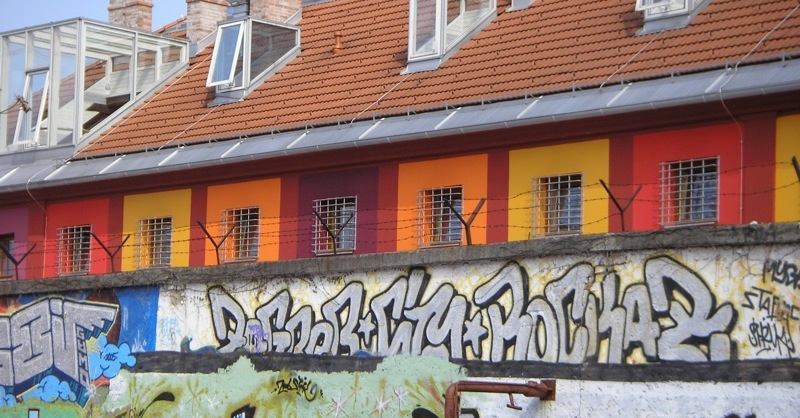 Photo by Glen Scott
Photo by Glen Scott
The Slovene poet Gregor Strnisa’s poem, “There Was a Tiger Here,” begins:
A bright spring rain fell the day through,
the branches drip, the sand in the lanes is damp yet,
the sky has cleared, slowly you go through the park,
the sun of evening haunts it, apparition-like…
Just then you find, in the wet ground before you,
the wide and clear and deep impressions.
The park is big, sun-striped, and full of shadows.
You start, go on, but know: a tiger came this way.
You can walk around Ljubljana and trace the marks that history’s tigers have left behind. The city, like all cities, is like an epic poem—a city built upon a city built upon another city, a stony entanglement of Roman ruins, feudal walls, Renaissance cathedrals, Baroque churches, Napoleonic archways, communist-era block housing, Ljubljana layered like a hunk of sedimentary rock, each stripe a man-hewn line of time. In Slovenia, that rounded crossroads on the nape of Europe’s east-west divide, history is everywhere. Even on the unassuming sidewalk behind the national gymnasium, where a small monument marks the exact spot in which Italian occupying forces executed a young father named Peter Romavh during World War II.
By 1942, as war swept Europe, the Italian fascists had encircled all of Ljubljana with a glinting ring of razor wire: 30,000 residents, no one in, no one out. The streets were peopled by soldiers and secret police so Romavh, a municipal railway worker and member of the underground Communist Party, avoided speaking to others in public—even to those he knew. Ljubljana was in effect a highly controlled municipal prison, guarded by Fascist soldiers in their green felt uniforms and polished, knee-high boots. The city was wrapped in a tense fog, perpetually teetering on the edge of all-out war.
Romavh and fellow railway workers organized against the Fascist occupation. Though leaving Ljubljana was impossible for ordinary citizens, the freedom fighters’ link to the railway provided an easy pipeline out of the city, through which they could deliver messages and disseminate liberation ideology to the occupied territories. In December 1941, the liberators organized the bombing of a bridge key to Hitler and Mussolini’s forces—a rail line that connected the heart of Europe to the African front. Outraged, the Triple Alliance ordered that anyone involved should be caught and killed.
“This is what happened to my father,” said Peter Romavh, Jr., who was only six when his father was apprehended on the streets. The soldiers found liberation literature stuffed into his father’s coat pockets. He was taken immediately to prison in Metelkova, next to the Celica barracks, and, ten days later, just before six-year-old Peter was scheduled to start Kindergarten, armed guards dragged mother and son into a women and children’s ward just across Metelkova’s courtyard from the elder Romavh’s cell.
Janko introduced to me to Peter Romavh one summer when I was in town, where I was hoping to understand more about Celica and its relationship to history. We met Peter at an outdoor café where he told me his story over cups of coffee, the world bustling around us as we spoke. A retired international businessman in his eighties, Peter has watery blue eyes and instant emotional recall of these dark parts of history—his own, and the world’s. As our coffees cooled, he’d explained to me that during the Second World War, over 100,000 Slovenes were killed out of a population of approximately one million, which made it, percentage-wise, the second largest casualty center in all of Europe (after Russia). During this time, over 2,500 hostages were executed—often publicly—on Lubljana’s cobbled streets. Every Ljubljanan, Peter told me, had witnessed an execution.
At the women and children’s barracks in the Metelkova district, Peter’s mother was interrogated incessantly and beaten for information about her husband’s activities. But she knew few details, and she refused to cede whatever knowledge she did have. Just across the courtyard was the building where his father was imprisoned in a room full of hostages, all awaiting near certain execution. “Everyone who stayed there knew that he would be shot,” Peter said.
Mother and son were released after several months, returning to a house that had been looted of all their possessions. But the elder Romavh remained at Celica. Peter recalled that, after a few weeks of freedom, he and his mother heard five concise gunshots pierce the noiseless city air. They knew that the sounds meant that Peter’s father was dead.
* * * *
“Let’s start at the beginning.” Janko’s tour begins at Celica’s front door. Now in his fifties, he still retains a glimmer of his formal radicalism, though he is now a professor and central figure in Slovenian architecture. His approach to space dwells deep in the spiritual—each corner, each stone, each beam of light a metaphor in his architectural language. He shows us how the door, heavy wood with inlaid glass, is actually a blueprint of the building itself. This glass cutout also functions as a sundial: at exactly noon, a shaft of sunshine casts directly down Celica’s main corridor.
Janko explains that this building was a collaboration of over eighty international artists who came together to transform the repressive space into “a new state of openness and light.” Every cell was assigned to an individual or team of artists, such that no one room is the same—each its own artistic response to repression and entrapment, an attempt to optimize the limitations of a tiny cell in order to engender a sense of limitlessness. Most rooms maximize space vertically—lofting beds, building staircases that double as shelves, cutting new windows up into the sky. This is a practicality, of course—the furniture helps expand the tiny spaces, and it is nice looking, which helps Celica sell rooms—but it’s also a metaphor. Thus was the two-pronged goal of the entire project: to make a space that functions as a memorial, as a vivid symbol of transformation, and also as a place where someone might actually want to come and stay. As Janko opens the cell doors to show off the rooms like works of art, his keys jangle ominously against the original metal bars.
Janko shows us to the “Corner of Peace,” a room for meditating, praying, and contemplating, with six small altars, one for each of five major world religions—Christianity, Judaism, Hinduism, Islam, Buddhism—plus one empty, representing all other faiths. “This empty one we took from the Slovenian tradition in which there was always one grave left empty, for people whose bodies were not found, so that they could symbolically be buried at home.” He explains that this is the only room on which they did not leave bars on the windows or doors. “This room is open all the time,” he says, the one Celica door that is never locked.
We arrive at a locked glass door off Celica’s main hallway. “Here down is the cellar—the dungeons,” where they kept those they wanted to punish most. “Would you like to see it?” he asks. “It’s a little bit…intense.”
The basement, pitch black but for the light of Rociz’s phone, is cold and wet, the air like an autonomous organism in the vault’s deep-sea obscurity. In the back, beneath the staircase, are two tiny cells encased in stone.
“Solitary confinement,” Janko explains. “Completely closed spaces where people were deprived not only of freedom, but also of light.” If you shine a light upon the dungeon’s floor, you can see the upper crust of cement—likely from the Yugoslav area—and a layer of cobblestones underneath. The cementing of oppression upon the stones of captivity, another layered Slovenian story, these solitary cells like terminal, mute cities built only for one.
Beneath the staircase, Janko shows us a tiny hole drilled into the rock—the one structural adjustment the Celica team made to this underground space. With time, our eyes adjust and we see why: through the hole beams a dim ray of light. “It is a camera obscura,” he says. We turn toward the dungeon’s back wall, where the Metelkova courtyard, like an inverted old time movie, is projected through a thin tunnel of light. “An invitation from darkness,” Janko explains.
Later, over beers in the courtyard, he tells me, “Many people have forgotten the history that took place in Slovenia.” The tables fill with guests and the music cranks louder as afternoon turns to night. He explains that, as the historical horror recedes further into the horizon, the country’s younger generations are forgetting—or perhaps they just lack awareness about a time that they never really knew. The preservation of Metelkova in general, and Celica in particular, was an effort to prevent this widespread amnesia and keep history both alive and transformed. By coming here, Janko says—as thousands of tourists and artists and school children do each year—people can understand the history that is so rapidly vanishing from collective memory.
* * * *
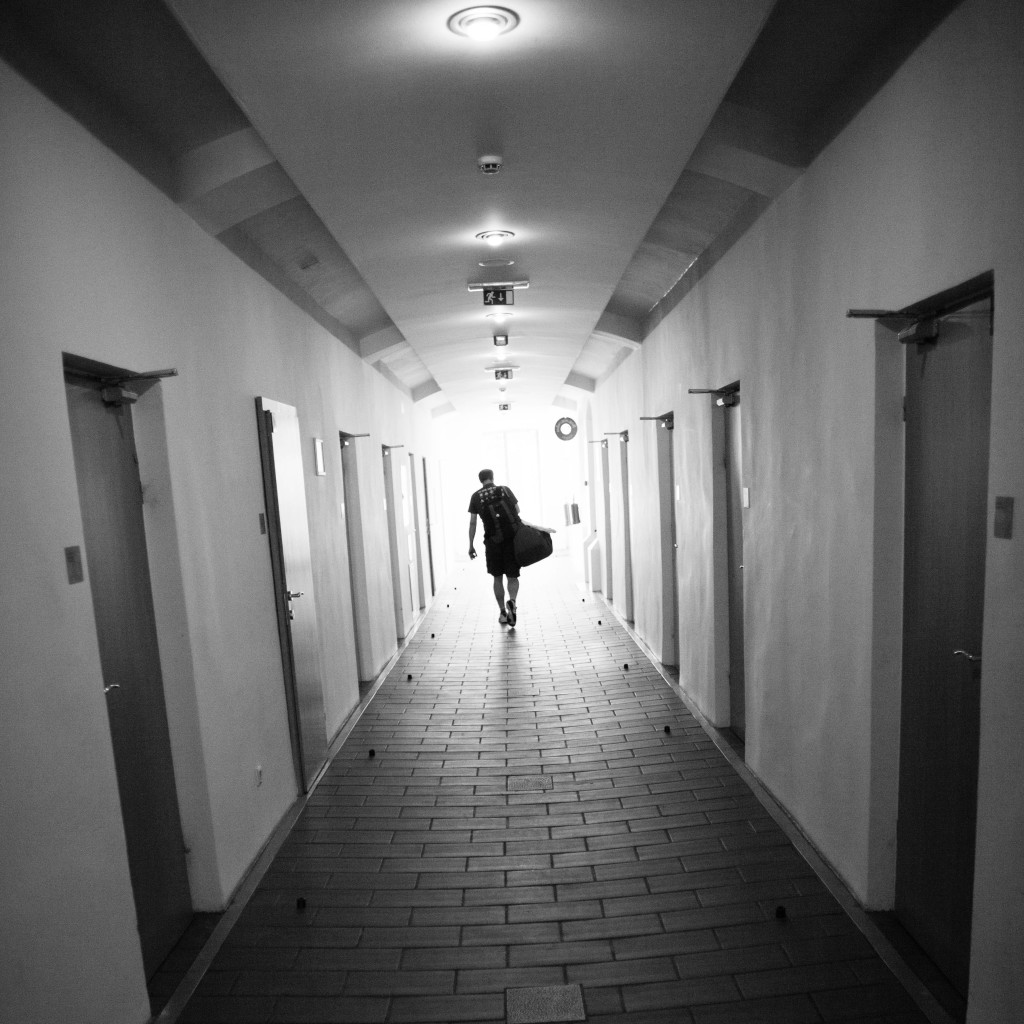 Photo by Eole Wind
Photo by Eole Wind
I take a shower and slip on my dress to go to dinner. Because there’s no mirror in my room, only eyes and eyes and eyes, I walk down to the communal bathroom to pull up my hair. The bathroom is tiled with fluorescent pink—“violent pink,” a guest once joked to Janko. Next to me, a young woman in pink jeans brushes her long, dirty-blond hair, freshly washed. Her shoes are pink, her cheeks are flushed pink, too. I feel old and square in my black dress, shapeless and severe.
She introduces herself—she’s nineteen and from Iceland, on a cultural exchange trip with young people from around the world.
“And where are you from?” she asks.
“California,” I reply. She gasps with glee.
“Oh!” she says. “One of my friends on my trip is from California! You must meet her!”
That would be great, I say. I ask her what she thinks of sleeping in a former prison.
“Oh, she says, “It’s a little strange. But interesting. I don’t really think about it.” Same here, I agree again, though I think we’re both lying. I bid her goodnight and head out across Metelkova’s cobblestones toward dinner.
As I walk through the lowering light of Ljubljana, I think about what Peter Romavh had told me over coffee. “Most guests don’t know anything about the history,” he’d said. “They simply don’t understand the situation as it was then. They only see Ljubljana as it is today.”
Even after his father was plucked from Celica and stolen from the land of the living, his so-called treason followed the family, like its own inheritance or hex. They were barred from access to the regime-issued ration cards, and, since the city was walled off from the rest of the world, there were scarce other sources of food—they were forced to scrounge and bargain. In springtime, they filled their garden with potatoes and carrots and greens, and raised rabbits to skewer and roast. Next door, a better-off family kept a team of goats. They hired Peter to herd them toward the grassy outskirts of town to graze, just before the barbed border where the soldiers stood watch, in exchange for milk. Peter and his mother secured counterfeit ration cards, which they then sold to others for a good price. Like this, they physically survived the Italian occupation.
As a form of spiritual survival, a kind of quiet knocking of duty upon his young conscience, young Peter would hide rusted nails under the tires of military vehicles, loving the sound the tires would make when they burst. His home once again became a key node on the underground network of freedom fighters, which relied upon neighborhood boys like Peter to deliver notes on bicycle from one home to another, rolled like tiny scrolls and stashed in the hollow of their handlebars.
“This was our obligation,” Peter explains of his band of small liberators.
In 1943, the Fascists capitulated to the allied forces and left Slovenia (a short-lived victory, for soon after the fall of the Fascists, the Nazis marched in to Ljubljana). On the afternoon of their departure, as the Italian army clamored from the barracks and out of town the way they had come, Peter’s doorbell rang.
“It was a soldier,” he said. Not knowing what else to do, his mother opened the door and the man explained hastily why he had come.
He had been a former prison guard, he told the family. “I spent your father’s last hour with him. He gave me a ring and a letter, and I brought it to you.” He had promised Romavh, Sr. he would do so, having for over a year hidden the message from his superiors. He handed over the ring and the letter. “My beloved ones: A few minutes ago I learned that I am to die,” it begins.
I wish for you to stay in good health, to forget all that has been bad, and to live a fortunate life. And to you, my beloved little son, also this: All these days I have been thinking of you, wondering when I will be able to look once more into your eyes. Do you love me still? Be a Slovene—whether you are safe, I don’t know. What shall I write to you in these fleeting moments? At last, farewell to you all.
“If it weren’t for World War II,” Peter told me, eyes brimming with tears, “We would have had a very excellent life.”
Since Slovenia’s independence, he has been a staunch advocate to leverage public funds for the restoration and preservation of Celica as a historical site. Peter is “satisfied with the fact that this absolutely important historical memory is alive,” at Celica, and is glad that guests choose to come there, that they are interested in the place. At his urging, Celica installed a permanent historical exhibition in honor of Celica’s ten-year anniversary, in which Romavh, Sr.’s letter is displayed. He’s determined that, in spite all of the forgetting, Celica will provide some hope of remembrance.
“We should inform people of the history that happened here,” insists Peter, “To the ordinary people of Ljubljana—and that it happened only because of war.”
* * * *
The next morning: breakfast, again. I pour some cereal into a bowl and settle into a chair in the garden, where birds flit among the tables and the trees and the razor wire.
“California!” someone shouts. I turn: it’s the Icelandic pink girl, swaying a bit from side to side. She’s seated with three friends, who seem to be taking care of her. I notice she hasn’t changed her clothes, and I guess that she hasn’t yet gone to sleep.
“California!” she shouts louder at me.
“Hi!” I say. “Did you have a good night?”
“Oh, California,” she says, and produces a wet, drunken giggle. Then her face turns serious, and she whisper-shouts: “I kissed a girl last night.”
“Congratulations!” I tell her, not knowing what else to say.
“It was really intense. We had a very spiritual connection,” she said, and her friends laughed. “Have you ever kissed a girl before, California?”
I told her that indeed I had.
“How old are you, California?” she asks.
“Twenty-eight,” I say.
“Oh, that’s not so very old.” I thank her for that. “Did you kiss someone last night?” she says.
“No, just dinner with friends.”
“Oh.” It’s clear I’ve disappointed her.
“So will you see this girl again?” I ask.
She laughs mightily at this. “Oh, no—it was just a one time thing. Just a beautiful thing for one time. Things don’t need to last forever, you know.”
I agree, nothing’s forever. I finish my cereal, congratulate her again, and take my leave.
Maybe we Celica guests are just an oblivious, sluggish wrecking ball. I notice that there’s a shameful lack of solemnity, of homage, of memorializing happening on this hallowed ground.
And yet, what ground isn’t hallowed? As my Slovene friend said of his country’s turbulent past: “But that’s Europe! Show me a place that’s any different.” Show me a place on earth that hasn’t been trammeled by fellow humans, show me a place where the tiger has not tread. So perhaps that’s the way of it: people must pave over wreckage and bones, because how else do we move on?
I asked members of Sestava, the artist group that formed Celica, whether a museum, with its encased relics and explanatory placards and requisite gift shop, might not have been a better choice. But they said, unanimously and adamantly, no. Their original vision remains very much intact. Though occasional drunken antics certainly weren’t their primary aim, “We wanted to transform the space into something else—not to keep it static.” Sestava has resisted putting explanations on the walls of each cell, for example, or handing out comprehensive histories of the space to each guest. “We want the experience to not just be intellectual, but also felt.” Janko explained that to force the history of the space down the throats of all visitors is in and of itself a totalitarian act—an abuse, in a way, of the space and of Sestava’s power as the creators, and perhaps even a repetition of the problematic nature of “absolute truth” that so often infuses systems of incarceration.
The historical exhibition in Celica is small and subtle—so much so that most people miss it unless they are trying to find it. And details like the demolition-hole-turned window and the front door’s sundial are there to be noticed, or not. The memorials lie in the walls and floors and windows and doors themselves. Janko insists: it’s not just a memorial, it’s a transformation. Nothing, as my pink Icelandic friend reminded me over breakfast, lasts forever—and maybe that’s the point.
* * * *
Janko takes me to the region where he was raised, in the pastoral, undulating folds just beneath the Julian Alps. We twist through the Slovene green, up then down again, past crystalline rivers, past cottages nestled in hills, past an elderly couple harvesting currants from their garden to boil into a year’s worth of jam. I think of where I used to live in Vermont, that other soft green land, and Frost’s poem, “Out, Out”: “They listened at his heart/Little—less—nothing!—and that ended it /No more to build on there. And they, since they / Were not the one dead, turned to their affairs.” There are those among us who go on with their affairs, and those of us who take up lodging among the dead and the lost, sniffing the tracks of the tiger, collecting forensics, its hairs and scat and shards of teeth.
This is how some of the days pass for Cveta Stepanjan, the widow of the late Argop Stepanjan, a musician accused of espionage at the hands of the Yugoslav regime, which started as a socialist revolution to unite the Balkans but soon became infamous for its secrecy, abuses of human rights, and all-out ethnic war. Cveta lives in these green hills along with her grown son, Negos. When Janko and I arrive at their door, she is hunched over the table, pawing through stacks of paper recovered from the era of the Yugoslav regime, page after declassified page Xeroxed and bound together.
“Like Wikileaks!” Negos laughs, pointing at his mother. She laughs, too, brightly and kindly, then adjusts her spectacles and goes back to her stacks.
Her husband—part Bulgarian, part Armenian—had been a jazz drummer who played gigs across Slovenia. When a Yugoslav spy was killed in Bulgaria, all Slovenes of Bulgarian descent became suspect, including Argop. He was carted away to prison at Celica, then taken to Bosnia, then back to Slovenia again. Cveta herself was twice dragged to prison, for four days each, where they tried to force her to confess her husband’s guilt. Negos, at age eight, was pulled out of school on multiple occasions by a band of uniformed soldiers and taken into the forest, where he was interrogated about his father’s activities. “Who did your father work with? Where did he hide his bombs?”
“We know that he was involved in terrorist activities, but because we don’t yet have proof, we cannot release him from prison,” reads a briefing on his case from Cveta’s stacks of papers.
“You see?” Janko says. “This was a crazy, crazy time.” I remembered Peter Romavh telling me that history had repeated itself again with the Yugoslav occupation. People forgot the oppression of World War II, and then it returned again—at the hands of a new regime.
In her own private act of memorial, Cveta tried to obtain documents about her husband’s case all throughout the nineties, but the government refused access. In 2010, Cveta managed to access the Slovene archive during the few months it was open, before changing hands to a new director, who promptly sealed them back up in a familiar, dust-riddled silence. There are still more documents she’d like to get her hands on, but there’s nothing to be done. Some people even claim that people who would be implicated in the atrocities of the nineties—judges and bureaucrats, inspectors and police—still work in government today.
In one of Cveta’s papers, highlighted and underlined, is a letter from a top Yugoslav strategist overseeing her husband’s case. To move Argop’s case along, he suggested the following: “We must remove him from the prison and take him into the forest. We will give him a deployed bomb, and observe from a safe distance. If he is a spy, he will certainly know how to deactivate the bomb. If he is not a spy, he will die. We will watch to see the results.”
“How many Slovene people know about all this?” I ask, motioning to the papers splayed across the table among folded meats and cheeses.
“They don’t know,” says Cveta, shaking her head. Her son agrees. It’s not that history has been blithely forgotten, only that the young people don’t have lived memories of it, and many from the older generation prefer not to talk of it all.
From outside comes a loud crack and a bright flash of light. I jump in my seat, startled, still half existing in the past incarnated by the pile of records on the table. Cveta laughs. “Don’t worry, it’s not a bomb!” A neighbor is celebrating her fiftieth birthday, she explains, and her sons are lighting fireworks into the quiet night sky.
After five years of mostly solitary confinement, Argop was released. He could not smile or play with his children. All he could do was pace around their house—six steps in one direction, six steps in the other. The exact dimensions of his cell.
“Six steps,” Cveta repeats, and demonstrates for me, counting each slow pace in one direction and then, turning on her heels, in the other. Though he was physically out of prison, psychologically he was never released.
“Broken,” Cveta says, “They broke him.” He never played music again.
Cveta will never stop reading through these papers, will never stop fighting for access to the vaults. To her, excavating the truth will help ease the searing injustice she suffered. She wants the world to know what really happened. Letters from Cveta to Argop’s captors hang alongside the story of Romavh’s family in the small history exhibit in Celica. I ask Cveta what she thinks about the hostel.
“For a long time, I couldn’t go there. Very hard memories, too hard to go back.” She is stacking the papers back together and straightening the edges of the piles. “But I think it’s a good place. Especially the music,” she says, referring to the weekly concerts there. “It feels like maybe,” she smiles, “the songs are for him, like music for my man.” For Cveta, the transformation of Celica is in many ways the perfect memorial for the life she had lost. She purses her lips and lifts her shoulders, pointing upward toward the ceiling. “It was all about the music for him.”
* * * *
We all grieve differently; we all build private inner memorials made of different stuff. Peter Romavh, Jr. wants history written down and remembered, Cveta Stepanjan wants it uncovered, Janko Rozic wants it transformed. These are the ways of the living: noticing the pale rectangles on the wall, scouring memory for what once hung in those spaces, covering them up or hanging something new there.
Janko invites me to Celica’s Tuesday night concert, this week a troupe of young Bulgarian folk musicians playing traditional songs. As I approach Metelkova, which is just starting to bustle with the thrill of coming night, I can hear the music, like a low mixture of jubilance and grief, rippling up and over the razor-wire walls. The musicians are young but the songs are old—and the voices and instruments seem so, too. Celica’s garden is packed, with not a seat to be had.
“These uneven rhythms,” Janko says, nodding. “They are beautiful. Very Dionysian.”
When the musicians take their intermission, he turns to a fellow visitor and me and asks, “Would you like the tour?” I don’t want to trouble him—I’ve taken the tour several times, and this evening is Janko’s rare night off.
“It is up to you,” he says with a shrug. “But these tours are always interesting to me.” So we stand and walk again toward Celica’s entrance: the beginning. We trod the hallways and tiptoe down to the dungeon, past the Romavh and Stepanjan family letters, and sip our glasses of beer in the murky blackness, and then back upstairs. All the rooms are occupied, but we climb to the former attic, now transformed into a common space and dormitory. It is nearly midnight, so we speak in low voices. Janko points out the windows, the angles of the walls. As he speaks, I’m holding onto a bannister of smooth driftwood. Janko smiles and points to it. “That was one of the last details of Celica,” he explains.
“Before we opened, I was feeling very stressed and exhausted. I met a friend for a walk up in the mountains.” On the banks of a lake where he sat clearing his head, he spotted this long piece of driftwood—over ten feet in height. “I saw that it would be perfect for just this space,” he says, showing us how, now fastened to the wall at waist height, it spans the entire top flight of stairs. “It was rough at first,” he explained, “But now it is very smooth. This shows the power of human touch to change things as they were.”
Downstairs, the show has begun again. The music starts low and stringy, then picks up in tempo. The accordion, both melodious and percussive, calls the crowd to attention. Janko, leaning against the side of the courtyard, begins clapping, slow and rhythmically. The music fills the hallways, the old dungeon, the corner of peace, the stuffy light-filled attic above where people are already sleeping. One by one by one, the entire courtyard stops its chatter, puts down its drinks, and begins to clap along in time—knee-deep in history both known and unknown, the tiger tracks faintly visible but the tiger, for now, retreated, everyone in the courtyard moving onward with the spirited affairs of the living.
Feature photo by Glen Scott.
Lauren Markham
Lauren Markham is the author of A Map of Future Ruins: On Borders and Belonging, and The Far Away Brothers: Two Young Migrants and the Making of an American Life, which was awarded the Northern California Book Award, The California Book Award Silver Medal, and the Ridenhour Prize. Her essays and journalism have appeared in outlets such as The New York Times Magazine, Guernica, Harper's,










